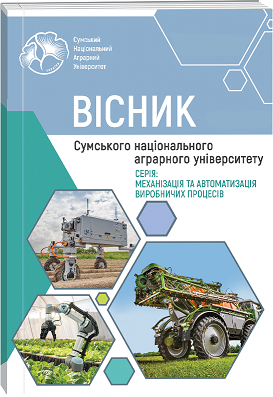DETERMINATION OF DERIVATOGRAPHIC ANALYSIS OF JELLY BAR COMPONENTS USING CASHEW NUT FLOUR
Abstract
A key factor in ensuring the stability and quality of gels during their production, storage and use in confectionery and culinary products is their level of heat resistance, which depends on the composition and content of dry substances. This article analyzes the thermogravimetric properties of hydrogels created on the basis of agar and including honey and cashew nut flour for the production of jelly bars. The study consisted of two main stages. The first stage included the study of individual ingredients included in the hydrogel: agar 1200 TM «Fujian Province» (China), food glycerin TM BASF (Germany), sunflower honey and cashew nut flour. The second stage included the preparation of samples of agar hydrogels taking into account the necessary ingredients: «agar 1 % – water – glycerol 0,2 %», «agar 1 % – water – glycerol 0,2 % – honey 25 %», «agar 1 %-water – glycerin 0,2 % – honey 25 % – cashew nut flour 20 %». The comparative analysis indicated that at all stages of decomposition of the experimental samples there is a loss of mass due to the evaporation of water. It was found that the final mass loss for pure agar from the beginning of the study was 16,91 % (or 16,75 mg). The mass change for glycerin was 0,17 % (or 0,21 mg), the mass loss of sunflower honey was 46,06 % (or 56,20 mg), and for cashew nut flour the mass change was 7,25 % (or 8,92 mg). In the complex gels, a decrease in the rate of water removal was observed, which is explained by the formation of additional bonds between the agar and other components of the formulation, such as honey and cashew nut flour. It was established that at the end of the experiment, the mass of the «agar-water-glycerin» test sample changed by 42 % (or 44,10 mg), the mass loss of the «agar-water-glycerin-honey» sample was 33,40 % (or 36,74 mg), and the mass of the sample «agar-water-glycerin-honey-cashew nut flour» gradually decreased and at the end of the experiment changed by 28,82 % (or 34,59 mg) at an elevated temperature associated with evaporation of the aqueous phase.
References
2. Gok S., Severcan M., Goormaghtigh E., Kandemir I., Severcan F. (2015). Differentiation of Anatolian Honey Samples from Different Botanical Origins by ATR-FTIR Spectroscopy Using Multivariate Analysis. Food Chemistry. Vol. 170. P. 234–240. https://doi.org/10.1016/j.foodchem.2014.08.040
3. Kasprzyk I., Depciuch J., Grabek-Lejko D., Parlinska-Wojtan M. (2018). FTIR-ATR Spectroscopy of Pollen and Honey as a Tool for Unifloral Honey Authentication. The Case Study of Rape Honey. Food Control. Vol. 84 P. 33–40. https://doi.org/10.1016/j.foodcont.2017.07.015
4. Koshel O.Iu., Pertsevoi F.V., Marchenko O.S., Chuiko O.V., Samilyk M. M. (2020). Deryvatohrafichni doslidzhennia komponentiv rozroblenykh molokovmisnykh termostabilnykh nachynok z zhelatynom ta transhliutaminazoiu [Derivatographic studies of components in developed milk-containing thermally stable fillings with gelatin and transglutaminase]. Naukovyi visnyk TDATU. Vyp. 10. Т. 2. С. 232-238. http://repo.snau.edu.ua:8080/xmlui/handle/123456789/9029 [in Ukrainian]
5. Martínez-Sanz M., Gómez-Mascaraque L.G., Ballester A.R. (2019). Production of unpurified agar-based extracts from red seaweed Gelidium sesquipedale by means of simplified extraction protocols. Algal Research. Vol. 38. P. 101420. https://doi.org/10.1016/j.algal.2019.101420
6. Ouyang Q-Q, Zhang H., Li S-D., Quan W-Y., Wen L-L., Yang Z-M., Li P-W. (2018). Thermal degradation of agar: mechanism and toxicity of products. Food Chemistry. Vol. 264. P. 277-283. https://doi.org/10.1016/j.foodchem.2018.04.098
7. Pauliuc D., Dranca F., Ropciuc S., Oroian M. (2022). Advanced Characterization of Monofloral Honeys from Romania. Food Agriculture. Vol. 12 (4). P. 526. https://doi.org/10.3390/agriculture12040526
8. Pradhan G., Chandra Sharma Y. (2020). Studies on green synthesis of glycerol carbonate from waste cooking oil derived glycerol over an economically viable NiMgOx heterogeneous solid base catalyst. Journal of Cleaner Production. Vol. 264. P. 121258. https://doi.org/10.1016/j.jclepro.2020.121258
9. Shanina O. M., Borovikova N. O., Havrysh T. V., Duhina K. V., Feizopulo O. E. Vplyv dobavok bilkovoi ta polisakharydnoi pryrody na volohoutrymuiuchu zdatnist bezkleikovynnoho tista [The influence of protein and polysaccharide additives on the moisture retention capacity of gluten-free dough]. Visnyk Kharkivskoho natsionalnoho tekhnichnoho universytetu silskoho hospodarstva. 2019. 207. С. 132-141. https://repo.btu.kharkov.ua//handle/123456789/4970 [in Ukrainian]
10. Shankar S., Reddy J.P., Rhim J.W. (2015). Effect of lignin on water vapor barrier, mechanical, and structural properties of agar/lignin composite films. International Journal of Biological Macromolecules. Vol. 81. P. 267-273. https://doi.org/10.1016/j.ijbiomac.2015.08.015
11. Shankar S., Rhim J-W. (2016). Tocopherol-mediated synthesis of silver nanoparticles and preparation of antimicrobial PBAT/silver nanoparticles composite films. LWT - Food Science and Technology. Vol. 72. P. 149-156. https://doi.org/10.1016/j.lwt.2016.04.054
12. Siddiqui A.J., Musharraf S.G., Choudhary M.I., Rahman A. (2017). Application of Analytical Methods in Authentication and Adulteration of Honey. Food Chem. Vol. 217. P. 687–698. https://doi.org/10.1016/j.foodchem.2016.09.001
13. Silva I. A. A., Souza A. L., Cordeiro A. M. T. M., Soledade L. E. B., Queiroz N., Souza A. G. (2013). Thermal degradation of honeys and evaluation of physicochemical properties. Journal of Thermal Analysis and Calorimetry. Vol. 114. P. 353–358. https://doi.org/10.1007/s10973-012-2926-x
14. Singh, I., Singh, S. (2018). Honey Moisture Reduction and Its Quality. Journal of Food Science and Technology. Vol. 55. P. 3861–3871. https://doi.org/10.1007/s13197-018-3341-5
15. Sokolovska I.O., Kambulova Yu.V., Overchuk N.O. (2016). Doslidzhennia stupeniu zviazuvannia vody v heliakh pektynu i alhinatu natriiu [Research on the water binding capacity in pectin and sodium alginate gels]. Eastern-European Journal of Enterprise Technologies. Vol. 2(11). с. 1-11. https://doi.org/10.15587/1729-4061.2016.65746 [in Ukrainian]
16. Xiao Y-d., Huang W-y., Li D-j., Song J-f., Liu C-q., Wei Q-y., Zhang M., Yang Q-m. (2018). Thermal degradation kinetics of all-trans and cis-carotenoids in a light-induced model system. Food Chemistry. Vol. 239. P. 360-368. https://doi.org/10.1016/j.foodchem.2017.06.107
17. Yalcin A., Soddu E., Turunc Bayrakdar E., Uyanikgil Y., Kanit L., Armagan G., Rassu G., Gavini E., Giunchedi P. (2016). Neuroprotective Effects of Engineered Polymeric Nasal Microspheres Containing Hydroxypropyl-β-cyclodextrin on β-Amyloid (1-42)–Induced Toxicity. Journal of Pharmaceutical Sciences. Vol. 105 (8). P. 2372-2380. https://doi.org/10.1016/j.xphs.2016.05.017

 ISSN
ISSN  ISSN
ISSN 



